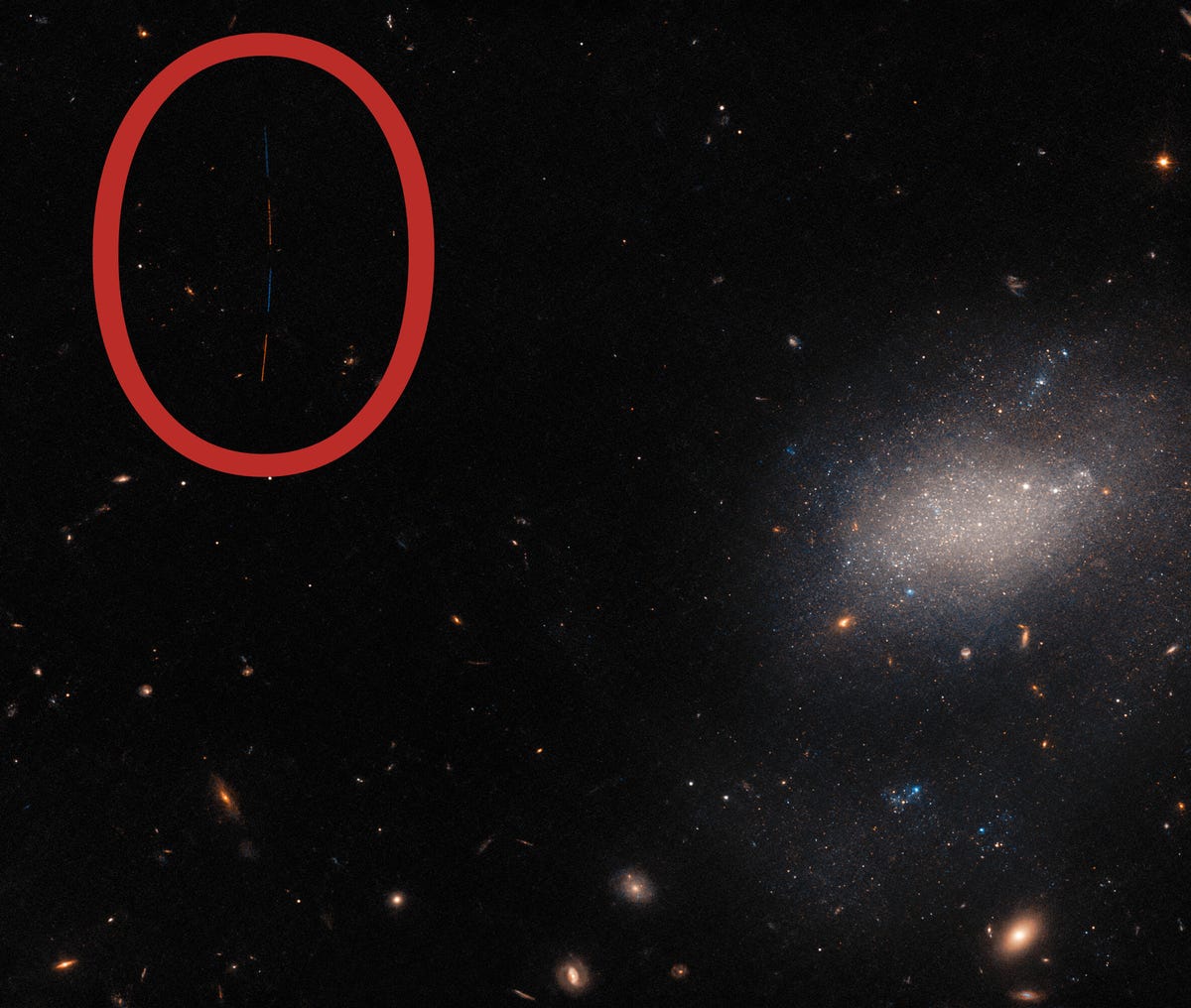A Hubble Space Telescope image released Monday has an obvious target in the middle: hazy galaxy UGC 7983. But as with many Hubble images, there’s a lot more going on here than initially meets the eye.
Can you also spot the photobombing asteroid?
UGC 7983 is a small galaxy located 30 million light-years away in Virgo. The European Space Agency describes it as a dwarf irregular galaxy. It’s in good company. Many other galaxies are visible in the background. You can also spot bright stars.

There’s that sneaky asteroid, circled in red.
ESA/Hubble & NASA, R. Tully
As for the asteroid, you might have to do some hunting to find it.
“A minor asteroid, only a handful of kilometers across, can be seen streaking across the upper left-hand side of this image,” ESA said. The space rock’s trail is represented by four thin dashes of light. The image consists of four exposures combined together, which is why the asteroid appears as four streaks.
ESA described the asteroid’s capture as a “fortunate side effect.” The main purpose of the galaxy image was to fill in gaps in Hubble’s observations of known galaxies located close to our own Milky Way.
NASA unveils 30 dazzling new Hubble space images for an epic anniversary
Hubble, a joint project from ESA and NASA, has been in service for over three decades. While the telescope is known for its spectacular images of galaxies, planets and nebulae, it’s also turned out to be an expert asteroid finder. Last year, ESA shared that asteroid hunters had identified over 1,700 asteroid trails in archival Hubble images.
Hubble helps researchers learn more about orbits and sizes of asteroids. And it’s released some beautiful views.







